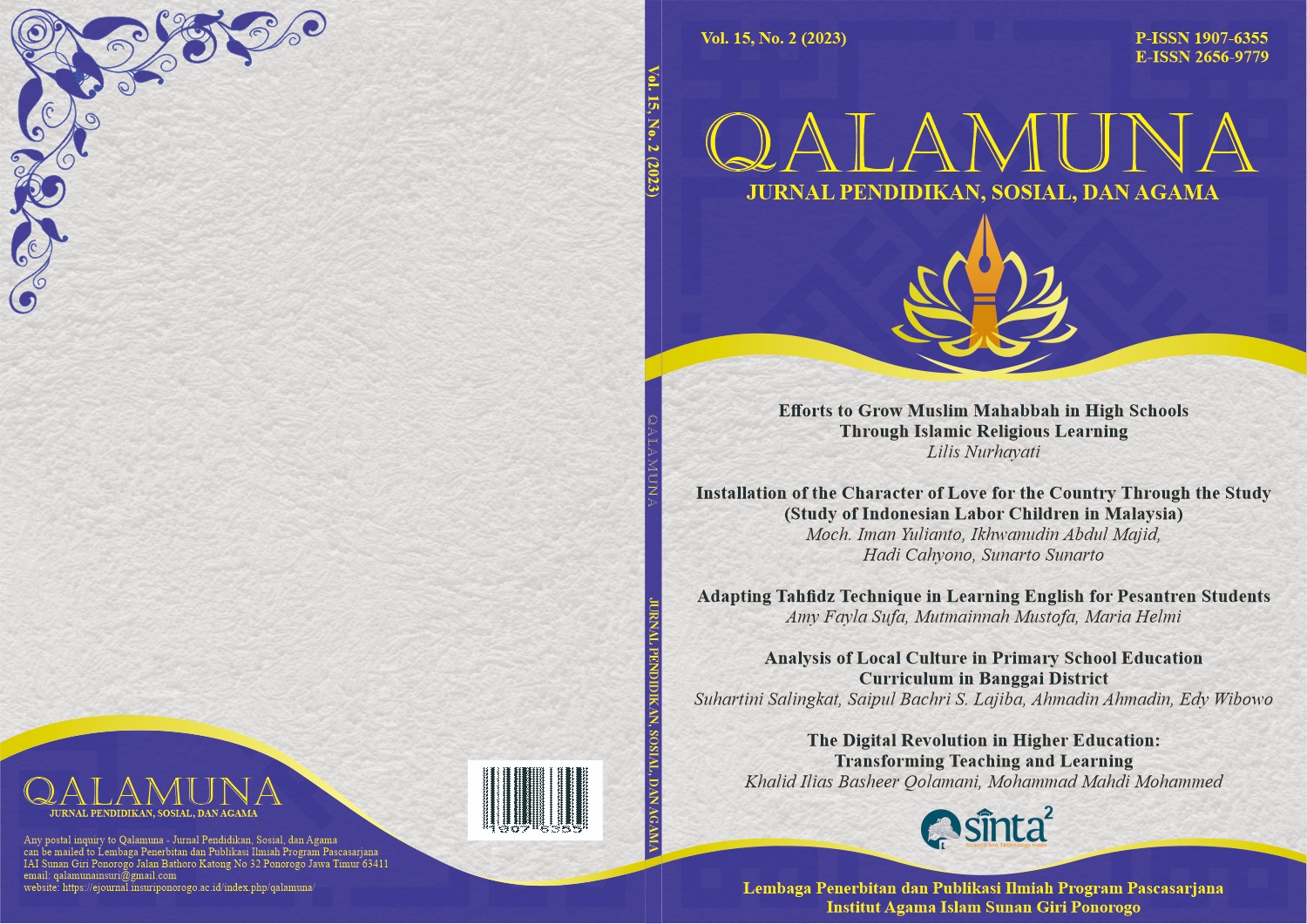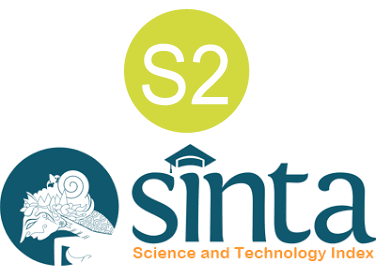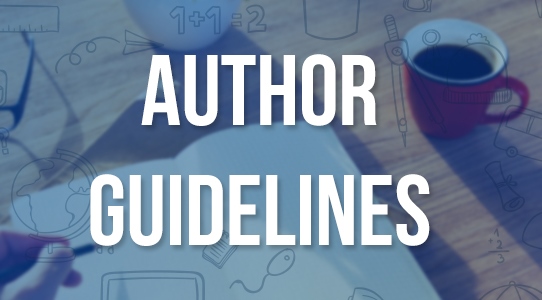Ciculapod for Teaching Circulation Systems: Development and Validity of Biological Learning Media
DOI:
https://doi.org/10.37680/qalamuna.v15i2.3349Keywords:
Teaching Material; Nearpod; Circulation System; Conceptual UnderstandingAbstract
The goal of this research is to develop valid and feasible Nearpod-based circulation system teaching materials. This research method uses the ADDIE development model, which includes stages of analysis, design, development, implementation, and evaluation. The research was conducted from July 2022 to June 2023. The teaching materials were tested for feasibility in material, media, and language and tested by Biology teachers and students of SMAN 14 Jakarta. The feasibility test results showed that Nearpod-based circulation system teaching materials had an average score of 3.65 (very valid) on the material aspect, 3.89 (very valid) on the media aspect, and 3.53 (very valid) on the language aspect. In Biology, the teacher trial obtained a mean value of 3.51 and an average of 3.31 for the student trials. This shows that Circulapod teaching materials are very valid and feasible to be used as learning media for circulatory systems learning in schools.
References
Abdullah, M. I., Inayati, D., & Karyawati, N. N. (2022). Nearpod is used as a learning platform to improve student learning motivation in an elementary school. Journal of Education and Learning (EduLearn), 16(1), 121–129. https://doi.org/10.11591/edulearn.v16i1.20421
Ahmed, A. M., & Elmubark, A. Y. (2022). An Investigation into Using Nearpod as an Interactive Tool to Aid Students’ Achievement and Motivation for Learning Educational Technology. Research on Humanities and Social Sciences, 12(4). https://doi.org/10.7176/RHSS/12-4-01
Akrim, M. (2018). Media Learning in Digital Era. Proceedings of the 5th International Conference on Community Development (AMCA 2018). https://doi.org/10.2991/amca-18.2018.127
Amaluddin, M. R., & Machali, I. (2022). Pemanfaatan Media Digital Sebagai Sarana Pembelajaran di SMA Babussalam Pekanbaru. Prosiding The 3rd Annual Conference on Madrasah Teachers (ACoMT), 5, 275–286.
Azrai, E. P., Razak, A. A., & Sartono, N. (2023). The E-learning-based group investigation (gi) effectiveness on student biology learning outcomes. Biosfer, 16(1), 176–185. https://doi.org/10.21009/biosferjpb.25015
Dewi, K., Cahya, P. I. C., Herman, D. S., & Priyanto. (2019). BLENDED LEARNING Konsep dan Implementasi pada Pendidikan Tinggi Vokasi. Swasta Nulus.
Feri, A., & Zulherman, Z. (2021). Development of neared-based e-module on science material “energy and its changes” to improve elementary school student learning achievement. International Journal of Education and Learning, 3(2), 165–174. https://doi.org/10.31763/ijele.v3i2.400
Hadiprayitno, G., Muhlis, & Kusmiyati. (2019). Problems in learning biology for senior high schools in Lombok Island. Journal of Physics: Conference Series, 1241(1), 012054. https://doi.org/10.1088/1742-6596/1241/1/012054
Jing, T. W., & Yue, W. S. (2016). Real-Time Assessment with Nearpod in the BYOD Classroom. In Assessment for Learning Within and Beyond the Classroom (pp. 103–107). Springer Singapore. https://doi.org/10.1007/978-981-10-0908-2_10
Kunto, I., Ariani, D., Widyaningrum, R., & Syahyani, R. (2021). Ragam Storyboard Untuk Produksi Media Pembelajaran. Jurnal Pembelajaran Inovatif, 4(1), 108–120. https://doi.org/10.21009/JPI.041.14
Lee, S., Kang, E., & Kim, H.-B. (2015). Exploring the Impact of Students’ Learning Approach on Collaborative Group Modeling of Blood Circulation. Journal of Science Education and Technology, 24(2–3), 234–255. https://doi.org/10.1007/s10956-014-9509-5
Lowry-Brock, M. R. (2016). The effect of using Nearpod as a tool of active learning in the high school science classroom. Montana State University.
Martín-Gutiérrez, Á., Díaz-Noguera, M. D., Hervás-Gómez, C., & Morales-Pérez, G. L. (2022). Models of Future Teachers’ Adaptation to New Post-Pandemic Digital Educational Scenarios. Sustainability, 14(21), 14291. https://doi.org/10.3390/su142114291
McClean, S., & Crowe, W. (2017). Making room for interactivity: using the cloud-based audience response system Nearpod to enhance engagement in lectures. FEMS Microbiology Letters, 364(6). https://doi.org/10.1093/femsle/fnx052
Minalti, M. P., & Yeni, E. (2021). Penggunaan Aplikasi Nearpod Untuk Bahan Ajar Pembelajaran Tematik Terpadu Tema 8 Subtema 1 Pembelajaran 3 Kelas IV Sekolah Dasar. Journal of Basic Education Studies, 4(1).
Moore, S. N. (2016). Nearpod. The Charleston Advisor, 17(4), 31–34. https://doi.org/10.5260/chara.17.4.31
Nana, & Surahman, E. (2019). Pengembangan Inovasi Pembelajaran Digital Menggunakan Model Blended POE2WE di Era Revolusi Industri 4.0. Prosiding SNFA (Seminar Nasional Fisika Dan Aplikasinya).
Nur, Y. D. S., Harmawati, H., & Maulana, R. (2022). Analisis Pemanfaatan Teknologi Informasi dalam Pembelajaran Daring pada Masa Pandemi Covid-19 di Sekolah Dasar. Jurnal Basicedu, 6(1), 869–876. https://doi.org/10.31004/basicedu.v6i1.2022
Nuryani, N., Saifuddin, M. F., Imana, A. H. N., Istiqomah, D., Haningsih, M. S., Ardani, V. P., Astuti, A. Y., & Ma’rifah, D. R. (2020). REMAP-RT in the Circulatory System Material to Improve Students Cognitive Learning Output. Mangifera Edu, 5(1), 55–63. https://doi.org/10.31943/mangiferaedu.v5i1.86
Oktafiani, O., & Mujazi, M. (2022). Pengaruh Media Pembelajaran Nearpod Terhadap Motivasi Belajar Pada Mata pelajaran Matematika. JPGI (Jurnal Penelitian Guru Indonesia), 7(1), 124. https://doi.org/10.29210/022033jpgi0005
Pasaribu, E. P. (2021). Pengembangan Bahan Ajar Daring Berbantuan Nearpod Pada Topik Bilangan Oksidasi untuk Menganalisis Keaktifan Peserta Didik. Fakultas Keguruan dan Ilmu Pendidikan. Universitas Sanata Dharma.
Pitre, I. J., Bolivar, M. G., & Pitre, R. G. (2022). Digital Transformation In The Education Sector Due To The Impact Of Covid-19. Journal of Language and Linguistic Studies, 18(3), 75–87.
Pramesti, A. D., Masfuah, S., & Ardianti, S. D. (2023). Media Interaktif Nearpod Guna Meningkatkan Hasil Belajar Siswa Sekolah Dasar. Jurnal Educatio FKIP UNMA, 9(1), 379–385. https://doi.org/10.31949/educatio.v9i1.4578
Ratumanan, G. T., & Laurens, T. (2011). Evaluasi Hasil Belajar pada Tingkat Satuan Pendidikan. UNESA University Press.
Rios-Zaruma, J., Chamba-Rueda, L., Zumba-Zuniga, M. F., & Pardo-Cueva, M. (2019). Application of ICT and M-Learning to Improve Collaborative Learning and Interaction Using the Nearpod Platform. 2019 14th Iberian Conference on Information Systems and Technologies (CISTI), 1–6. https://doi.org/10.23919/CISTI.2019.8760728
Ristanto, R. H., Zubaidah, S., Amin, M., & Rohman, F. (2018). From a reader to a scientist: developing corgi learning to empower scientific literacy and mastery of biology concept. Biosfer, 11(2), 90–100. https://doi.org/10.21009/biosferjpb.v11n2.90-100
Ryan, B. J. (2017). Near Peers: Harnessing the power of the populous to enhance the learning environment. Irish Journal of Technology Enhanced Learning, 2(1). https://doi.org/10.22554/ijtel.v2i1.16
Safitri, A., Noorhidayati, & Sri, A. (2021). Pengembangan Bahan Ajar Konsep Sistem Peredaran Darah Manusia Biologi SMA Dalam Bentuk Booklet Digital. BIOMA: Jurnal Biologi Dan Pembelajarannya, 3(2), 13–30. https://doi.org/10.31605/bioma.v3i2.1246
Siregar, J., Riniati, W. O., Aziz, F., Mahendika, D., & Abdullah, D. (2023). The Role Of Pictures And Videos In The Learning Independence Of Elementary School Students. Journal on Education, 5(4).
Soykan, E., Bastas, M., & Çakici, A. (2023). Editorial: Digital transformation of education in the COVID-19 process and its psychological effects on children. Frontiers in Education, 8. https://doi.org/10.3389/feduc.2023.1117458
Sumintono, Bambang, Wibowo, Setiawan, A., Mislan, Nora, & Tiawa, D. (2012). Penggunaan Teknologi Informasi dan Komunikasi dalam Pengajaran: Survei pada Guru-Guru Sains SMP di Indonesia. Jurnal Pengajaran MIPA, 17(1), 122–131.
Tauhidah, D., Jayanti, U. N. A. D., Rahmasiwi, A., Pamungkas, R., & Saifulloh, A. (2021). Utilization of e-learning platforms by lecturers during the COVID-19 pandemic in Indonesia. JPBI (Jurnal Pendidikan Biologi Indonesia), 7(3), 198–207. https://doi.org/10.22219/jpbi.v7i3.16816
Umardulis, U. (2019). Peningkatan Kompetensi Guru Menggunakan Teknologi Informasi dan Komunikasi (TIK) dalam Pembelajaran di Sekolah Dasar melalui Supervisi Klinis. JURNAL PAJAR (Pendidikan Dan Pengajaran), 3(4). https://doi.org/10.33578/pjr.v3i4.7539
Vitharana, P. R. K. A. (2021). Secondary School Learners Conceptions of the Structure and Function of the Human Circulatory System. International Journal of Humanities, Social Sciences and Education, 8(4). https://doi.org/10.20431/2349-0381.0804024
Wati, A. (2021). Penggunaan Media Virtual Laboratory untuk Meningkatkan Penguasaan Konsep Materi dan Kemandirian Siswa Melakukan Praktikum. Jurnal Guru Dikmen Dan Diksus, 4(2).
Watoni, E. S., Ngabekti, S., & Wijayati, N. (2022). Development of Lombok Island Environmental Change E-Module to Improve Environmental Literacy and Data Literacy of High School Students. Journal of Innovative Science Education, 11(2), 156–169.
Wibawanto, W. (2017). Desain dan Pemrograman Multimedia Pembelajaran Interaktif. Penerbit Cerdas Ulet Kreatif.
Widyastuti, E., & Susiana. (2019). Using the ADDIE model to develop learning material for actuarial mathematics. Journal of Physics: Conference Series, 1188, 012052. https://doi.org/10.1088/1742-6596/1188/1/012052
Xian, J. (2021). A Critical Evaluation of Nearpod’s Usefulness in Teaching K-12 Biology Science Online Classroom. Advances in Social Science, Education, and Humanities Research, 615. https://doi.org/10.2991/assehr.k.211220.156
Yanuarto, W. N., Setyaningsih, E., & Amri, K. (2023). Employing Nearpod as a Resource to Encourage Active Students in BYOD Mathematics Learning Model. JTAM (Jurnal Teori Dan Aplikasi Matematika), 7(1), 174. https://doi.org/10.31764/jtam.v7i1.11864
Yuliati, Y., & Saputra, D. S. (2019). Pembelajaran Sains di Era Revolusi Industri 4.0. Jurnal Cakrawala Pendas, 5(2).
Downloads
Published
How to Cite
Issue
Section
License
Authors who submit manuscript retain its copyright and grant publisher right of first publication licensed under a Creative Commons Attribution-ShareAlike 4.0 International License (CC BY-SA 4.0) that allows others to access (search, read, download, and cite), share (copy and redistribute the material in any medium or format) and adapt (remix, transform, and build upon any material) the work for any lawful purpose, even commercially with an acknowledgement of the work's authorship and initial publication in Qalamuna: Jurnal Pendidikan, Sosial, dan Agama.












